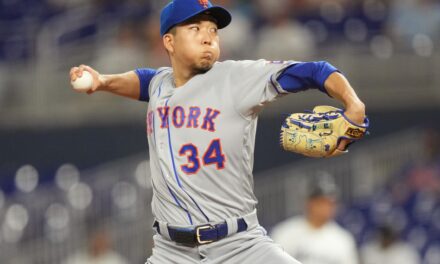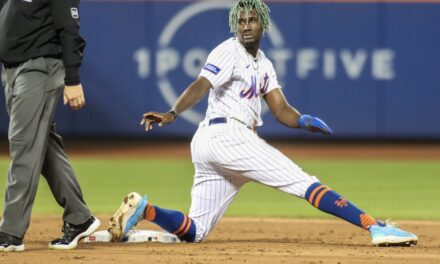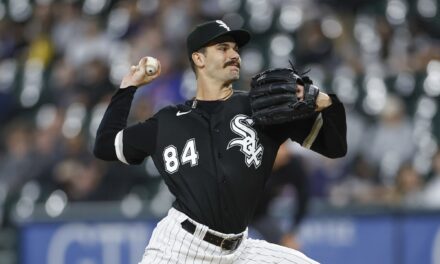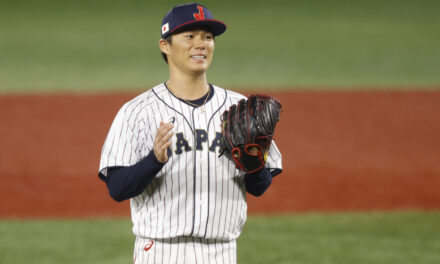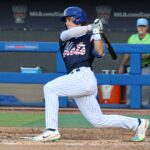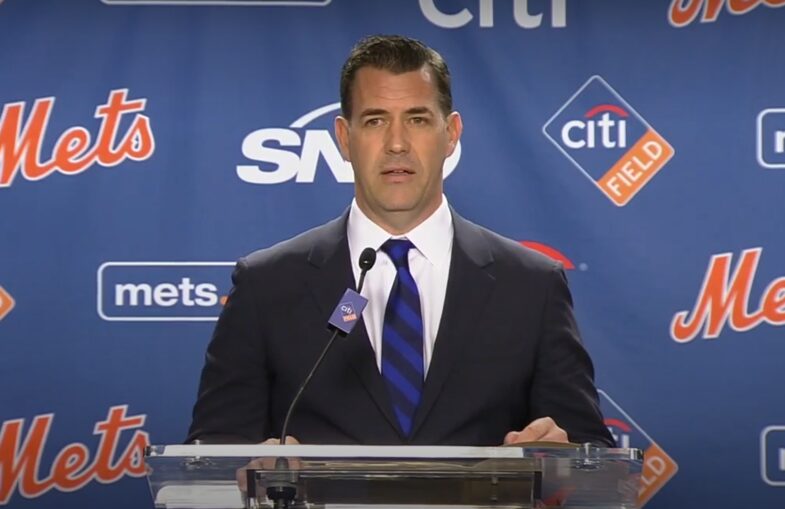
An MMO Fan Shot By Matt Dorritie
With the conclusion of the MLB season last week, we can finally turn our eyes to baseball’s hot stove. In recent years, the MLB offseason has been much ado about nothing. Unlike the NBA, which involves arguably more drama than the actual sport played during the season, the MLB lacks any significant punch to its offseason.
Front offices have become increasingly protective of player control and prospect capital – hoarding for the future, often at the expense of the present – and deals for major free agents now drag on as far as into the following season (see Dallas Keuchel and Craig Kimbrel).
Perhaps the biggest exception to the league’s general lack of activity last offseason was the New York Mets. In an era when most middling teams are looking to tear their rosters down, it was refreshing to see former–player–agent–turned–general–manager Brodie Van Wagenen go for it.
New York’s fanbase has been starved for winning baseball, with just four playoff appearances since the turn of the century. Despite some consternation amongst the fanbase at the selection of Van Wagenen as general manager, it was clear from day one that his ultimate goal is to change the organization’s losing culture and put a perennial winner on the field.
Nevertheless, the 2019 season will undoubtedly go down as a major disappointment. Despite marked improvement in the team’s overall record from the year prior, Van Wagenen’s key offseason transaction of acquiring Robinson Canó and Edwin Díaz proved to be a major misfire.
Many peg Díaz as the primary culprit for the team’s missed postseason appearance in 2019. Looking ahead, the situation appears even worse, as this deal will have a crippling effect on the Mets’ upcoming offseason plans. As such, we are going to examine what could have been for the 2019-2020 offseason had the Mets avoided this calamitous deal.
For the purposes of this article, I am assuming that the Mets will not exceed the CBT threshold for 2020 – given ownership’s reluctance to do so in the past – and that the organization made all the same moves as last offseason except (1) the Canó/Díaz trade and (2) not signing a high-profile, free-agent closer, who would have been needed without the addition of Díaz.
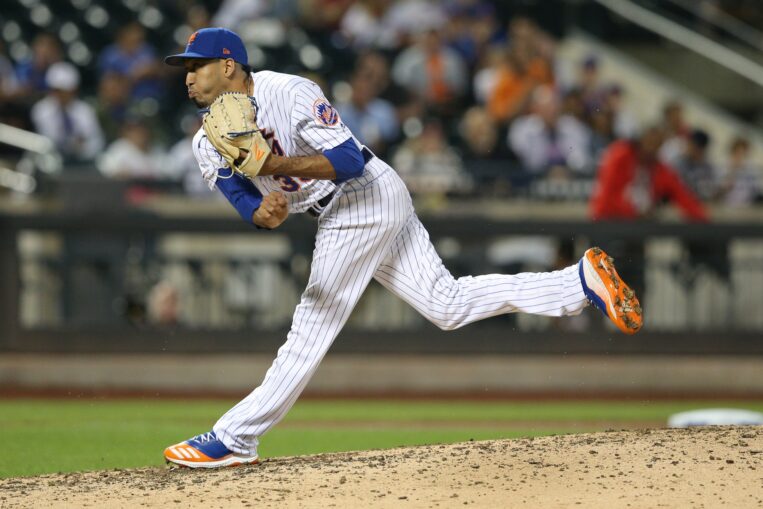
Financial Impact
When Van Wagenen announced the deal last December, much of the attention was justifiably focused on Canó’s sizable contract. Taking on a five-year, $120 million contract for a 36-year-old second baseman coming off a PED suspension is not generally regarded as a sound long-term investment. However, the Mariners helped offset some of that money by including $20 million and taking on the contracts of Jay Bruce and Anthony Swarzak ($21 million combined for 2019, $13 million for Bruce in 2020).
Díaz was considered the prize of the deal, providing an electric arm with long-term cost control. In acquiring Díaz, the Mets now had arguably baseball’s best reliever playing on a minimum salary in 2019 with three more years of control thereafter. What was largely overlooked at the time of the deal, however, was the impact that Díaz’s prior success as a Mariner would have on his salary during his arbitration years.
Arbitration salaries for relievers are largely dependent on total saves over the course of one’s career. Despite his struggles in 2019, Díaz has collected 135 career saves, more than anyone in history prior to hitting arbitration. Consequently, his salary is projected to increase roughly $6 million next year, with further increases likely in 2021 and 2022.
All told, New York’s payroll for next season is $160 million before making any additions to the roster. However, it’s collective bargaining tax (CBT) payroll sits at $181 million mainly due to the remaining money owed to David Wright. This leaves the organization with around $27 million for the front office to spend during this offseason.
Canó and Díaz will collectively account for $26.5 million against next season’s CBT payroll. While Bruce’s $13 million CBT salary is roughly half that, the Mets likely would have had to sign a high-profile bullpen arm, such as Adam Ottavino, to serve as the closer in Díaz’s stead.
Ottavino’s own 2019 shortcomings aside, his current contract with the Yankees will count for $9 million against the 2020 CBT payroll. With a combined CBT salary of $22 million, Bruce and Robertson would have provided New York with an additional $4.5 million to work with for the upcoming season in comparison to Canó and Díaz – not an insignificant sum when looking to round out the rest of the roster.
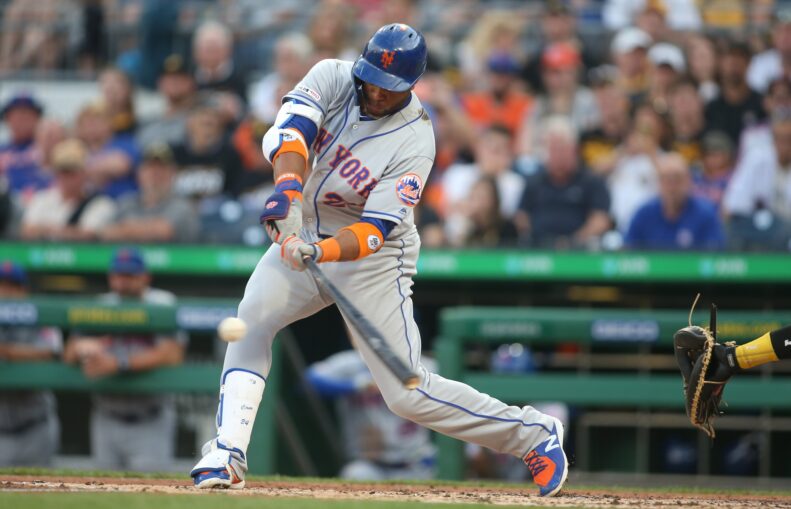
Roster Construction
This is where things get tricky. Following a rough 2018 season, Bruce was not a strong fit for the Mets’ future roster plans. It was obvious that some combination of Pete Alonso and Dom Smith would have first base covered for years, and the corner outfield spots were already occupied by Brandon Nimmo and Michael Conforto.
The additions of J.D. Davis and even Jeff McNeil into that rotation made the outfield situation even more muddled. However, given that the Mets placed Conforto and Nimmo in centerfield for much of the 2019 season anyway, it is entirely possible to see how Bruce could have fit on the roster as a corner outfielder and backup first baseman.
At the same time, the addition of Canó was particularly curious. Second base, of course, is Jeff McNeil’s natural position. He has also shown the ability to capably handle third base. By keeping Bruce instead of adding Canó, the Mets projected outfield for 2020 would be Conforto, Nimmo, and Bruce with the ability to mix in J.D. Davis based on the day’s matchup.
With Pete Alonso and Amed Rosario seemingly locked in at first base and shortstop, that would leave second or third base as the only obvious hole on the infield for 2020, depending where the manager would play McNeil on the field.
On the pitching side, the situation would look much the same as it does today. The bullpen would be nearly identical by swapping Díaz for the otherwise-signed, high-profile closer. Meanwhile, the rotation would still require a replacement for the possible departure of Zack Wheeler.
With only $31.5 million to spend in relation to the CBT threshold, Brodie Van Wagenen would still need to get creative to add value to the roster. However, the pieces saved by avoiding the Canó/Díaz deal could have gone a long way towards achieving the type of quality and depth Van Wagenen has strived for since his arrival.
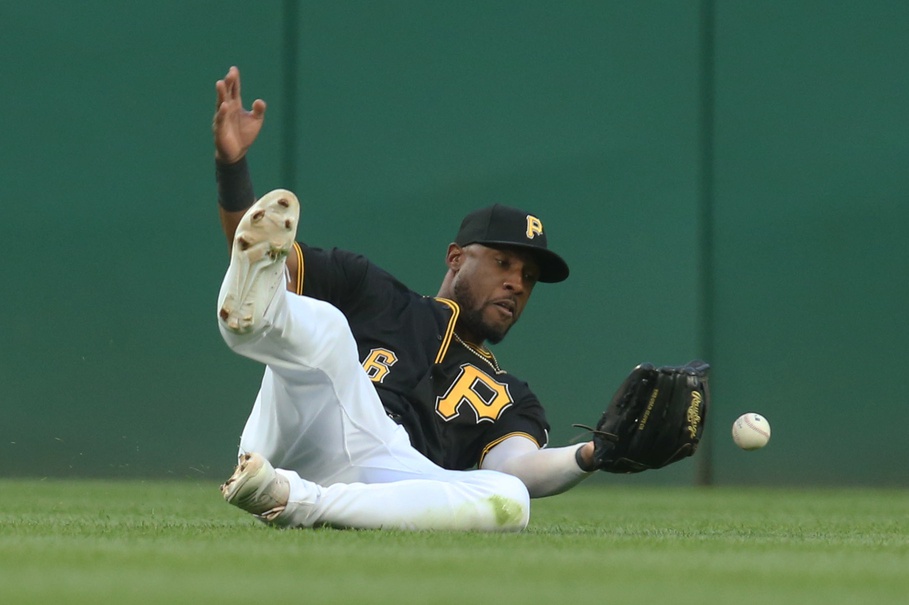
For example, instead of packaging Kelenic in the deal with the Mariners, the Mets could flip him for a center fielder like Starling Marte instead. While Marte graded negatively in center field last year with –11 defensive runs saved (DRS), there is evidence to suggest that he could at least serve as an average defender given his history as a two-time Gold Glove winner (2015-2016).
Marte also is locked up through 2021 and, despite annual salaries of $11.5 million and $12.5 million for the next two seasons, would only cause a $5.2 million hit against the CBT.
If the Mets are keen on a “defense first” approach in center, the team could have looked to sign someone like Jarrod Dyson instead (while simultaneously allowing them to retain Kelenic). Dyson posted 5 DRS in center field and accumulated 1.3 wins above replacement (WAR) this past season with the Arizona Diamondbacks. Given his age (35), he can likely be had for less than the $3.75 million he cost against the CBT this past season.
From there, the Mets could turn their attention to the infield. Shifting McNeil to third base, for example, would enable the Mets to attempt to trade for Whit Merrifield to fill the void at second. While Merrifield is one of the most valuable commodities in baseball due to his four-year, $16 million deal, the Royals are clearly in rebuilding mode.
A package centered around cost-controlled, MLB-ready players like Dominic Smith and Justin Dunn could have been enticing enough for them to pull the trigger on a deal. Kelenic could also be available if not moved for Marte. In this scenario, swapping Smith’s and Dunn’s salaries with Merrifield’s would only cost the Mets an additional $3 million against the CBT threshold.
With approximately $23-25 million remaining, rounding out the rest of the roster would have been much more manageable. Dallas Keuchel can likely be had for an annual average value of $15 million and could serve as a reliable fourth starter in the rotation to replace Wheeler.
The remaining money could then have been spent on filling the bench and bullpen. A cheap bench piece like Brad Miller or Ben Zobrist could provide some infield at-bats off the bench, while the team could look to trade for an underperforming, cost-controlled outfielder with potential like Bradley Zimmer or Lewis Brinson for depth.
Meanwhile, swingmen (like Collin McHugh, Alex Wood, Jordan Lyles, or Kevin Gausman) can likely be had for around $6 million combined to eat innings in the bullpen while providing the rotation with some much-needed depth.
With these moves, the Mets could have been looking at the following roster construction:
|
Lineup Option 1 |
Lineup Option 2 |
Bench |
|
|
Whit Merrifield (2B) |
Whit Merrifield (2B) |
Jay Bruce (1B/OF) |
|
|
Jeff McNeil (3B) |
Jeff McNeil (3B) |
J.D. Davis (OF) |
|
|
Pete Alonso (1B) |
Pete Alonso (1B) |
Jed Lowrie (INF) |
|
|
Michael Conforto (LF) |
Michael Conforto (LF) |
Brad Miller (INF) |
|
|
Starling Marte (CF) |
Wilson Ramos (C) |
Tomás Nido (C) |
|
|
Wilson Ramos (C) |
Brandon Nimmo (RF) |
||
|
Brandon Nimmo (RF) |
Amed Rosario (SS) |
||
|
Amed Rosario (SS) |
Jarrod Dyson (CF) |
|
Starting Rotation |
Bullpen |
|
|
1. |
Jacob DeGrom |
Adam Ottavino |
|
2. |
Jeurys Familia |
|
|
3. |
||
|
4. |
||
|
5. |
Robert Gsellman |
|
|
6. |
||
|
7. |
||
|
8. |
Paul Sewald |
|
40-Man Bench Depth |
40-Man Starting Pitching Depth |
40-Man Bullpen Depth |
|
|
1. |
Yoenis Céspedes (if healthy) |
||
|
2. |
|||
|
3. |
Minor League deals (a la Rajai Davis, Carlos Gómez) |
Robert Gsellman |
|
|
4. |
Luis Guillorme |
Tyler Bashlor |
|
|
5. |
Andrés Giménez |
Franklyn Kilome |
Obviously, hindsight is 20/20, and trades like the one for Canó and Díaz cannot simply be looked at in a vacuum. However, the deal has been demonstrably poor for the Mets since the day it was completed.
The financial cost of acquiring Canó and Díaz is not as exorbitant as it is often portrayed, but the value lost by dealing top prospects like Kelenic and Dunn has ironically hindered Van Wagenen’s ability to “win now and in the future,” a promise he made upon being hired last year.
While there is still the opportunity to make some of the aforementioned moves to build out the team’s roster for 2020, Van Wagenen must be all the more creative in order to add impact and depth to the roster this offseason.
* * * * * * *
This Fan Shot was contributed by MMO reader Matt Dorritie Have something you want to say about the Mets? Share your opinions with over 20,000 Met fans who read this site daily.
Send your Fan Shot to [email protected] or ask us about becoming a regular contributor.


